|
Corporal punishment-induced trauma
The cynical, systemic avoidance of responsibility with regard to the welfare of children in the United States is nowhere better illustrated than in the practice of corporal punishment in schools. |
|
Corporal punishment-induced trauma
The cynical, systemic avoidance of responsibility with regard to the welfare of children in the United States is nowhere better illustrated than in the practice of corporal punishment in schools. |
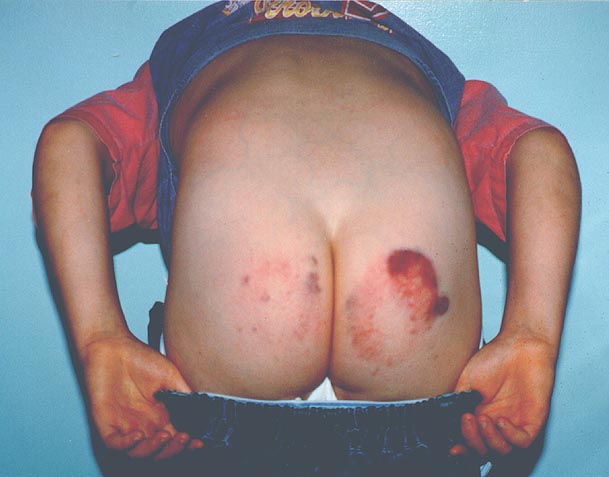
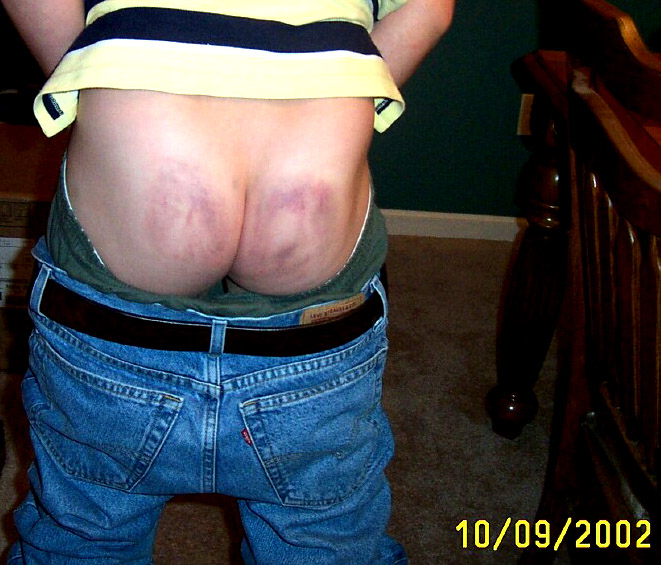
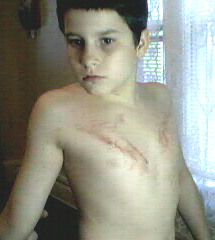
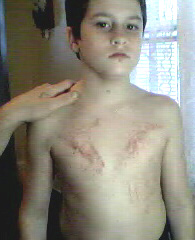
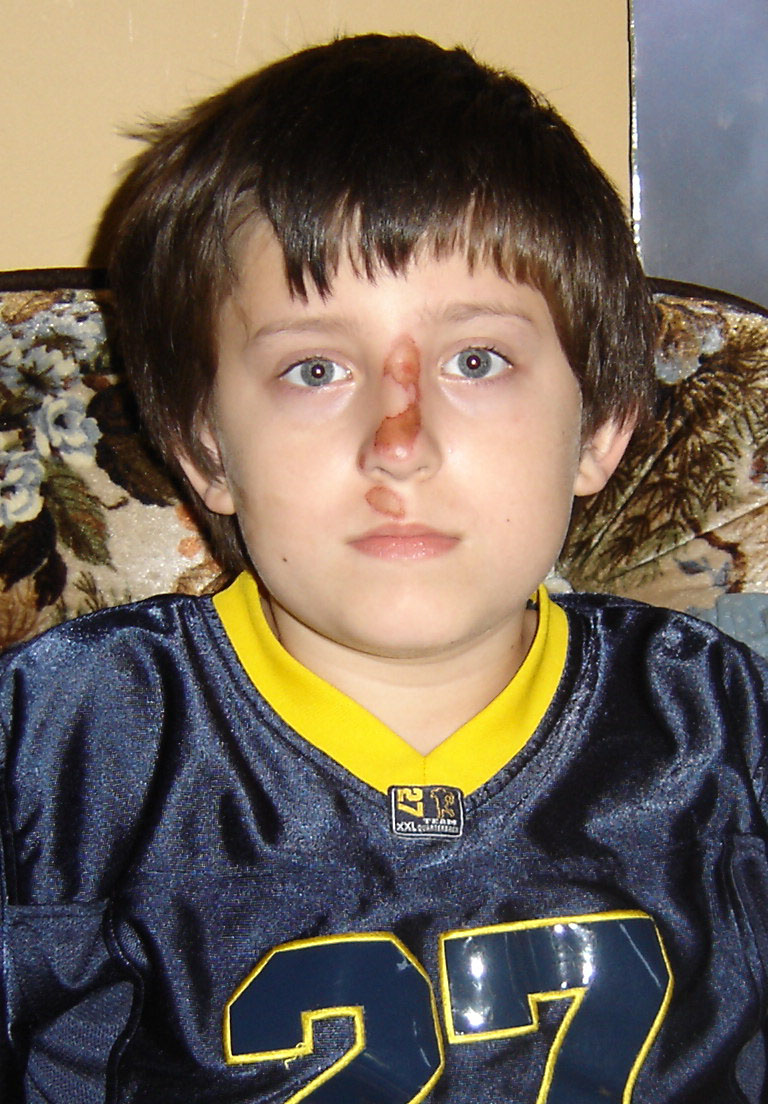
This child fell on his face while being paddled. He could not remember whether he lost consciousness due to the paddling or due to hitting the floor after being knocked down. He only remembers regaining consciousness, being on the floor, and seeing several school staff members looking down at him.
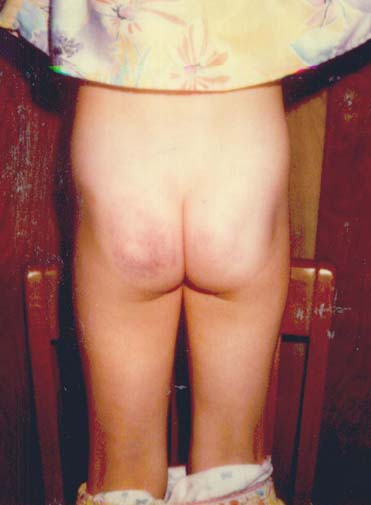
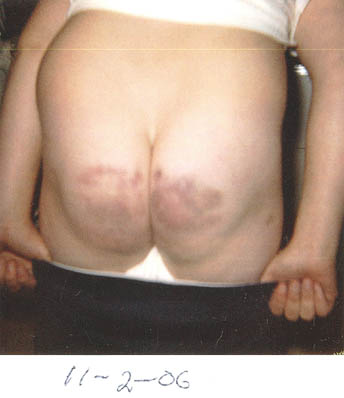


IMAGE AT RIGHT: Paddle (21.5 inches long by 3.5 inches wide) used on Mississippi middle school children until November 2002. Notice the sponge rubber taped to the grip in order to protect the user's hand.

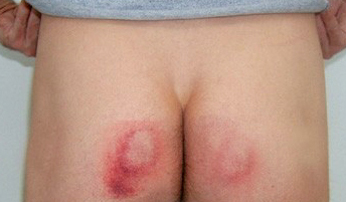
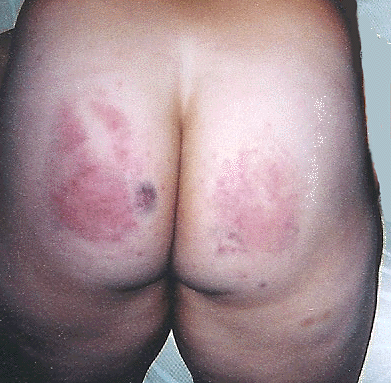
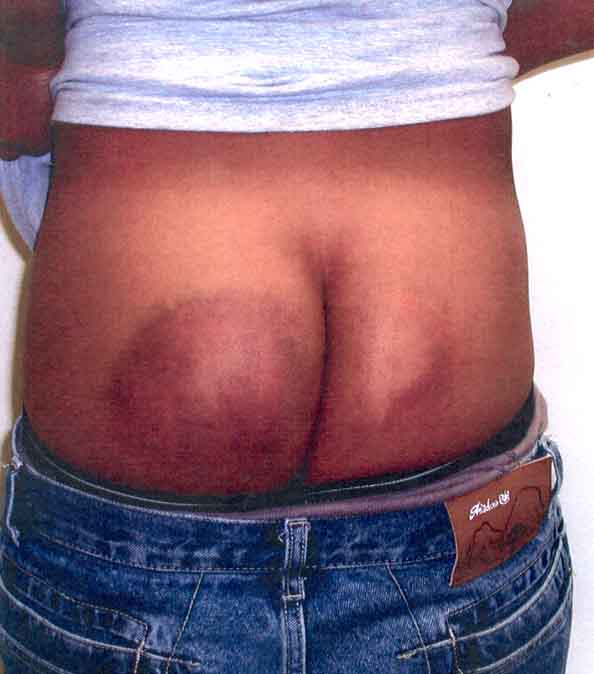
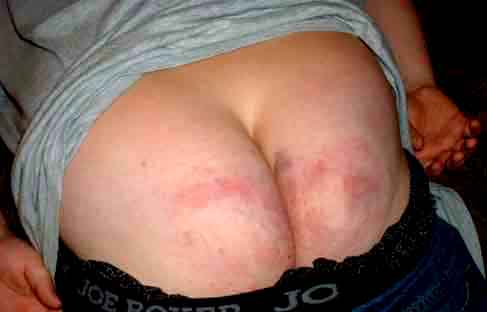

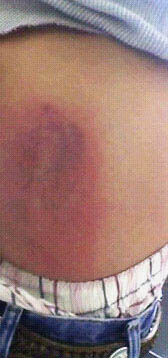


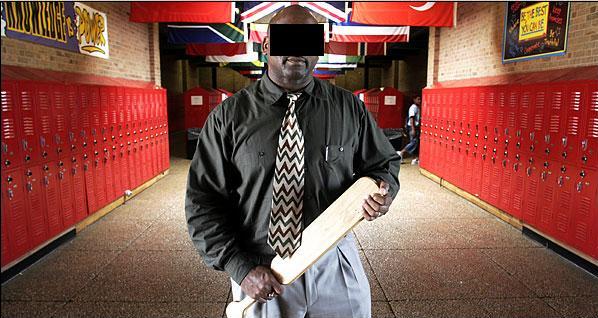
Proud paddler, Texas, August 2006
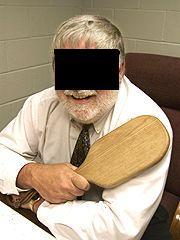
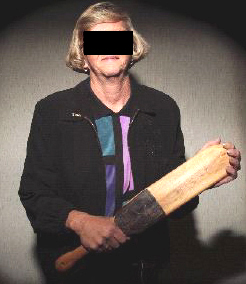

Three American educators with their tools of the trade

In full view of his teammates, a high school football player receives punishment for a failing grade. The coach hits him 5 blows to the buttocks with a wooden stick.
|
A model letter to lawmakers, policymakers and others in positions of responsibility and influence in states that permit corporal punishment of schoolchildren
Currently in ________, the only people who can smack someone on the buttocks as part of their paid professional duties are prostitutes, porn stars and educators employed in schools that practice paddling. Medical science has long recognized, and documented in great detail, how being struck on the buttocks can stimulate sexual feelings. Children of school age are especially susceptible. The tragic consequence for some who are subjected to this kind of abuse is that they form a connection between pain, humiliation and sexual arousal that endures for the rest of their lives. We can never know how many innocent children have had their sexual development derailed by school paddlings. Any number is too many. If one puts all other considerations aside, this should be reason enough to instruct paddlers in the schools to put away their weapons and begin teaching as they were trained. If they are unable or unwilling to do so, they should be advised to find some other line of employment. A full discussion of all the other things that are wrong with corporal punishment isn't within the scope of this letter, nor should it be necessary. That information is abundantly available, and any literate person with access to a computer can become an expert on the subject in two or three evenings. Only among the uninformed are arguments favoring corporal punishment taken seriously. Were that not the case, teachers' colleges would teach undergraduates the correct method for hitting children. They don't. Sincerely, _________________
|
|
"...And if we do not take more care of the character of the teachers and instructors we choose, I blush to think how shamefully such contemptible fellows will misuse their rights...”
Quintilian, circa 88 CE Read it in its entirety "...Yet such is the temper and moral culture of teachers themselves that it is exceedingly unsafe to leave too wide a discretion in their hands. The nature even of instructors of youth is fallible, and there is a kind of intoxication in the exercise of unlimited power, though it be only over little boys and girls, that may wisely be checked and controlled." From New York Times editorial, January 22, 1871. Read it in its entirety "...There never was a time when a major social problem was solved by beating a child. And there never will be such a time... For centuries adults have injured children and have lied about it, and other adults have heard those lies and then merely turned away... we must begin putting the blame where it belongs..."
C. Everett Koop, M.D., Sc. D., Surgeon General of the U.S. Public Health Service. "...First, we must do everything in our power to ensure the safety of our children. When children and teenagers go to school afraid of being bullied, or beaten, or worse, it is the ultimate betrayal of adult responsibility. It communicates the victory of moral chaos... No parent in America -- no matter their income -- should be forced to send their child to a school where violence reigns..." President George W. Bush, from "Education Policy," Part III: The True Goal of Education |
The Legislature finds and declares that the protection against corporal punishment, which extends to other citizens in other walks of life, should include children while they are under the control of the schools. Children of school age are at the most vulnerable and impressionable period of their lives and it is wholly reasonable that the safeguards to the integrity and sanctity of their bodies should be, at this tender age, at least equal to that afforded to other citizens. (a) For the purposes of this section "corporal punishment" means the willful infliction of, or willfully causing the infliction of, physical pain on a pupil. An amount of force that is reasonable and necessary for a person employed by or engaged in a school to quell a disturbance threatening physical injury to persons or damage to property, for purposes of self-defense, or to obtain possession of weapons or other dangerous objects within the control of the pupil, is not and shall not be construed to be corporal punishment within the meaning and intent of this section. Physical pain or discomfort caused by athletic competition or other such recreational activity, voluntarily engaged in by the pupil, is not and shall not be construed to be corporal punishment within the meaning and intent of this section. (b) No person employed by or engaged in a school shall inflict, cause to be inflicted, or threaten to inflict corporal punishment upon a pupil. Every resolution, bylaw, rule, ordinance, or other act or authority permitting or authorizing the infliction of corporal punishment upon a pupil attending a school is void and unenforceable.
|
|
HAVE YOU BEEN TO THE NEWSROOM? CLICK HERE! |